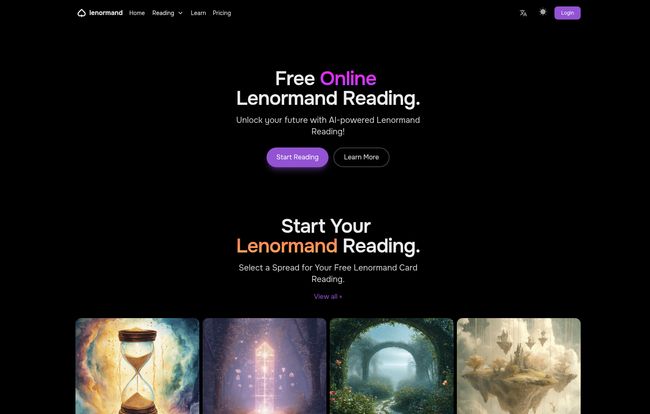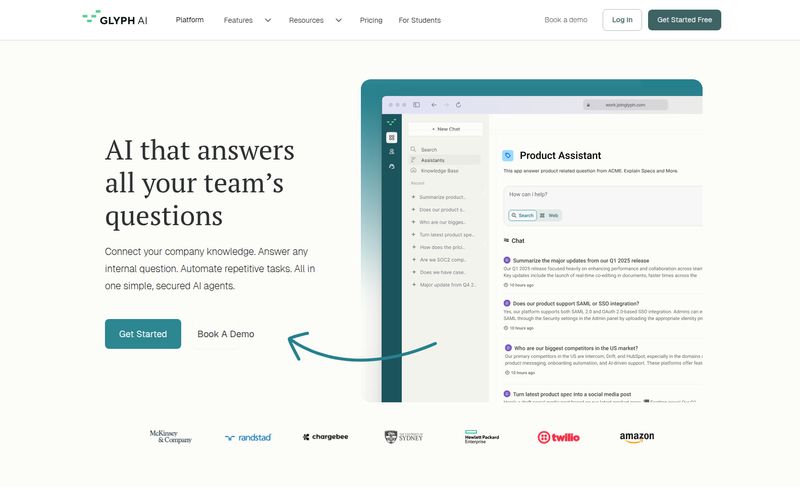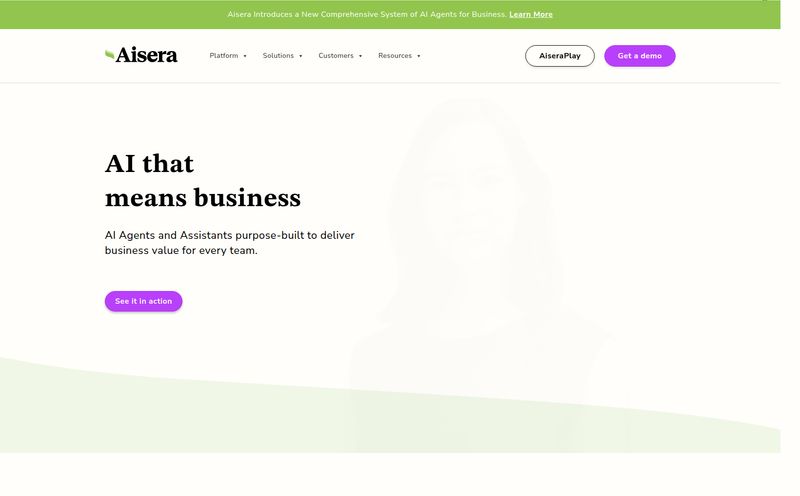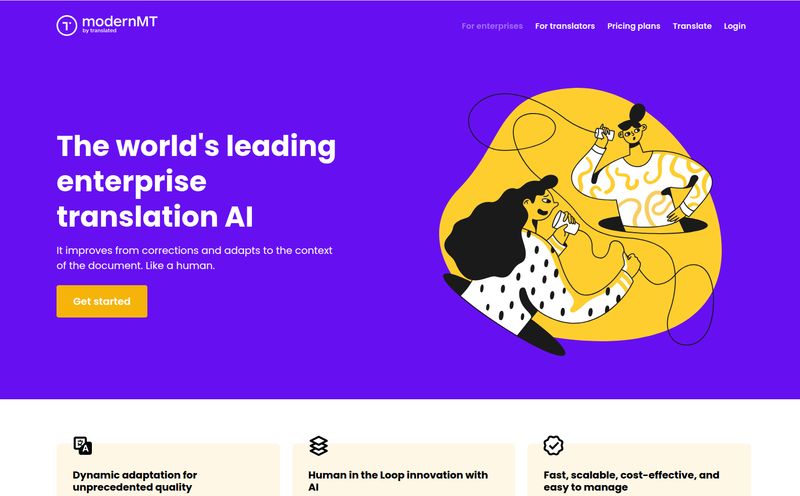We've all been there. Staring at the ceiling at 2 AM, wrestling with a decision that feels way too big for a simple pros-and-cons list. Or maybe you're just feeling a bit… adrift. In my years navigating the wild worlds of SEO and digital trends, that feeling of uncertainty is a constant companion. You're always looking for the next signal, the next pattern, the thing that will give you a little clarity.
It’s no wonder people have turned to tools like Tarot and Lenormand for centuries. They’re like a mirror, a way to externalize your thoughts and see patterns you might have missed. But let's face it, finding a good reader can be tough, and booking a session isn't always practical. So when I stumbled upon Lenormand.life, a platform offering AI-powered Lenormand readings, my inner skeptic and my inner geek both sat up and paid attention. An AI that tells your fortune? Sign me up for that experiment.
First, What in the World are Lenormand Cards?
Before we jump into the tech, let's have a quick chat about the cards themselves. If you're thinking this is just another Tarot deck, hold on a second. Lenormand is Tarot's more direct, no-nonsense cousin. Instead of the archetypal, often abstract imagery of the Tarot's Major Arcana, Lenormand uses 36 cards with very concrete symbols: a dog for loyalty, a ship for travel, a key for solutions.
I’ve always found Lenormand to be less about deep psychological spelunking and more about practical, everyday advice. The cards are read in combinations, creating a story that’s surprisingly straightforward. It's less 'what is my soul's purpose' and more 'is this a good time to ask for a raise'. And sometimes, that's exactly the kind of guidance you need.
Stepping into the Digital Parlor of Lenormand.life
My first impression of the website? It’s clean. It's fast. No weird mystical pop-ups or clunky animations. It gets right to the point, which feels very… well, Lenormand. You’re immediately presented with a menu of different readings, from a simple “Daily Lenormand Card” to the formidable “Grand Tableau,” which uses all 36 cards.

Visit Lenormand Life
The variety of spreads is impressive. You have your classics like the Past-Present-Future, but also very specific tools like a Decision-Making reading and a straight-up Yes/No draw. As someone who appreciates good user experience, I liked this. It shows they understand what people actually use these tools for. You're not just throwing cards at a wall; you're asking a specific question and getting a tailored layout in return.
The Different Ways to Ask a Question
I decided to take it for a spin. The process is simple: you focus on your question, click, and the cards are drawn. The platform then generates an interpretation. For a quick vibe check, the Daily Reading is perfect. It’s a one-card pull that gives you a little theme or piece of advice for the day. It’s like a spiritual horoscope, but way more personal. For those bigger, hairier problems, you can dive into something like The Cross spread, which gives a more detailed look at the core issue, what's influencing it, and the likely outcome. It's a solid mid-level spread for when you need more than a single card but aren't ready to tackle the beast that is the Grand Tableau.
The AI Reader: A Consistent, Unbiased Guide?
Okay, let's talk about the AI. This is where most people will either be totally on board or completely checked out. Can a machine really read cards? My take: it's complicated. On one hand, you lose the human touch—the intuition and life experience a seasoned reader brings to the table. An AI can't read your body language or hear the hesitation in your voice.
But here’s the flip side, and it’s a big one. The AI provides interpretations based purely on the traditional, established meanings of the cards and their combinations. It has no personal biases. It’s not having a bad day. It won't project its own stuff onto your reading. There's a certain purity to that. You get a consistent, unbiased interpretation every single time. For someone learning the system, this is actually a massive advantage. It helps you build a solid foundation of meanings without the noise. Plus, let's be honest, there's a level of privacy here that's unmatched. You can ask your most vulnerable questions without an ounce of judgment. I found one of the user reviews on their site really summed it up:
"I'm impressed by the AI's ability to combine Lenormand card meanings. Whether I'm seeking answers about my love life, career or personal growth, this has helped bring clarity and guidance. It's amazing concrete guidance without the usual fluff."
- Emma W.
The Price of Clarity: Free vs. Paid Membership
Like any good SaaS platform (and yes, I'm calling this 'Spirituality as a Service'), Lenormand.life operates on a freemium model. So, what’s the deal?
What You Can Do for Free
The free plan is surprisingly generous. You get two full readings per day. That’s more than enough to get a feel for the platform, do a daily draw, and even tackle a slightly bigger question now and then. This isn't just a crippled demo; it's a genuinely usable tool. For the casual user who just wants to check in once in a while, the free version might be all you ever need.
Unlocking the Full Deck with a Membership
If you find yourself hitting that two-reading limit often, or if you're a serious student of Lenormand, the subscription is where the real magic happens. This is where you unlock unlimited readings, get access to more in-depth guidance and decision analysis, and can view your entire reading history. That last one is a bigger deal than it sounds. Being able to look back at past readings and see how events unfolded is an incredible learning tool.
So, what's the damage? The pricing is pretty straightforward:
| Plan | Price | Key Benefits |
|---|---|---|
| Monthly | $9.99 / month | Unlimited readings, full history, decision analysis, priority access. |
| Yearly | $59.40 / year | Same as monthly, but at a 50% discount. Works out to about $4.95 a month. |
Is it worth it? If you're using it daily or trying to master the Grand Tableau, absolutely. The cost of the yearly plan is less than what you’d pay for a single one-hour session with many professional readers. For that price, you get an on-demand tool for a whole year. That’s a pretty compelling value proposition.
My Final Thoughts and Who This Is Really For
After spending a good bit of time with Lenormand.life, I’m genuinely impressed. It’s not trying to replace human readers, and I think that's smart. Instead, it’s carving out its own niche. It's a learning aid, a private journal, and a quick-access oracle all rolled into one slick package.
This platform is perfect for:
- Lenormand Beginners: It's an incredible way to learn card meanings and combinations in a low-pressure environment.
- The Budget-Conscious: The free tier is robust, and the paid tier is far cheaper than repeated professional readings.
- The Private and Shy: If the idea of baring your soul to a stranger gives you hives, this is your sanctuary.
- Seasoned Readers: Yep, even for us. It’s a great digital tool for a quick daily pull or for practicing complex spreads without having to clear off your entire dining room table.
It won't give you the same sense of connection as a face-to-face reading, no doubt. But it offers something else: convenience, consistency, and complete privacy. It's a modern solution to an ancient practice, and frankly, they’ve done a damn good job. It has earned a permanent bookmark in my browser.
Frequently Asked Questions
- Is an AI Lenormand reading accurate?
- Accuracy is subjective, but the AI provides readings based on established, traditional card meanings. This makes it highly consistent and unbiased, which many users find very accurate for practical guidance.
- How is Lenormand different from Tarot?
- The main difference is directness. Lenormand uses 36 cards with concrete meanings (e.g., House, Ship, Rider) to give practical, real-world advice. Tarot has 78 cards and often gives more psychological or archetypal insights.
- Can I really get a free Lenormand reading on this site?
- Yes, absolutely. Lenormand.life offers two free readings per day to all users. This includes access to all their different spreads, not just a simple one-card draw.
- What's the best spread for a beginner to use?
- The Past-Present-Future spread is a fantastic starting point. It's simple to understand, gives a clear narrative, and helps you get a feel for how the cards interact without being overwhelming.
- Is the yearly membership a better deal than the monthly one?
- Financially, yes. The yearly plan at $59.40 offers a 50% savings compared to paying $9.99 month-to-month for a year. If you plan on using the premium features regularly, the yearly plan is the most cost-effective option.



